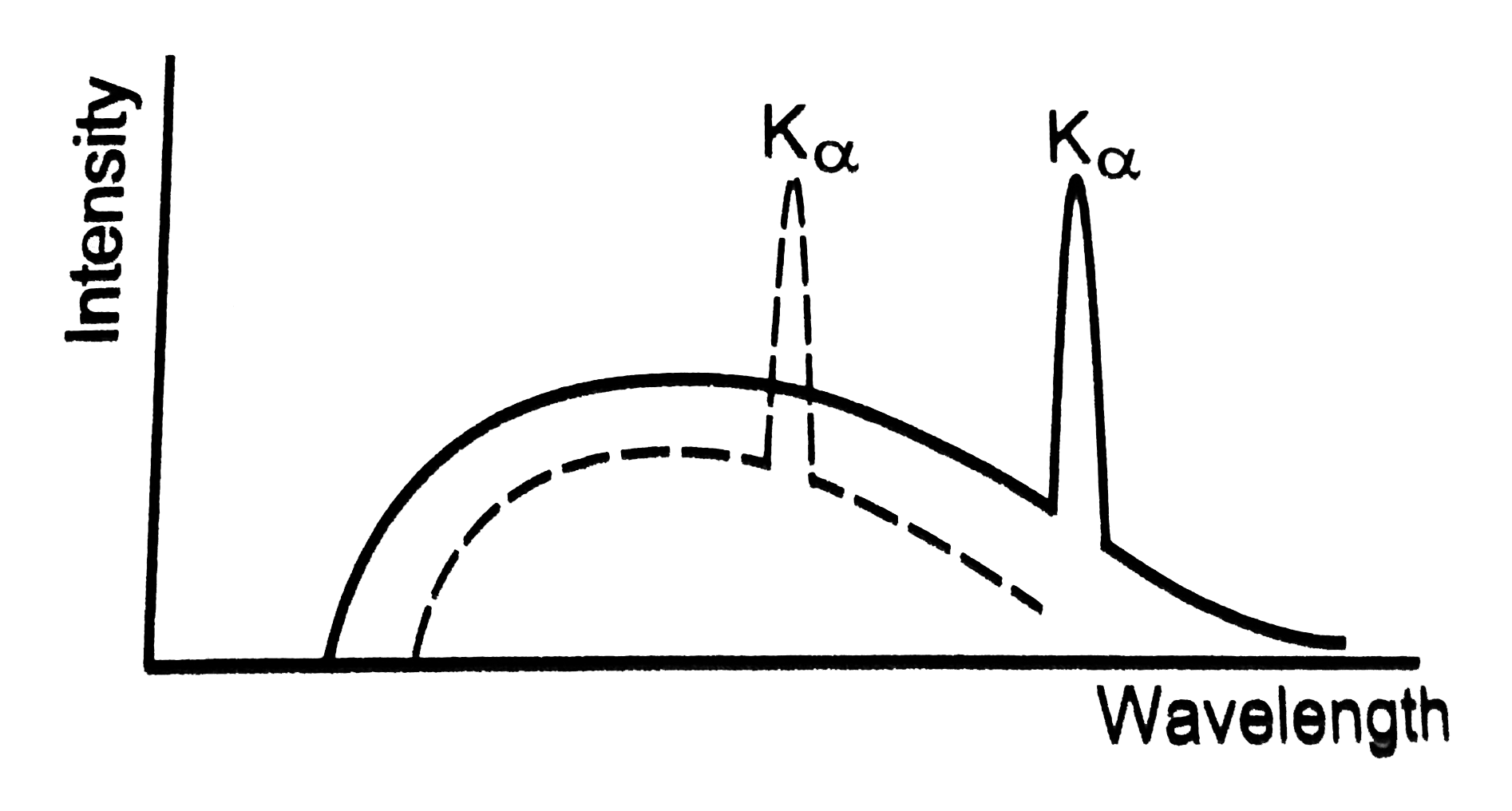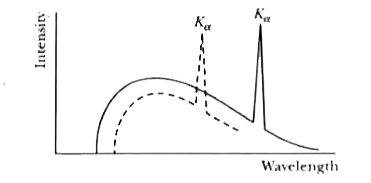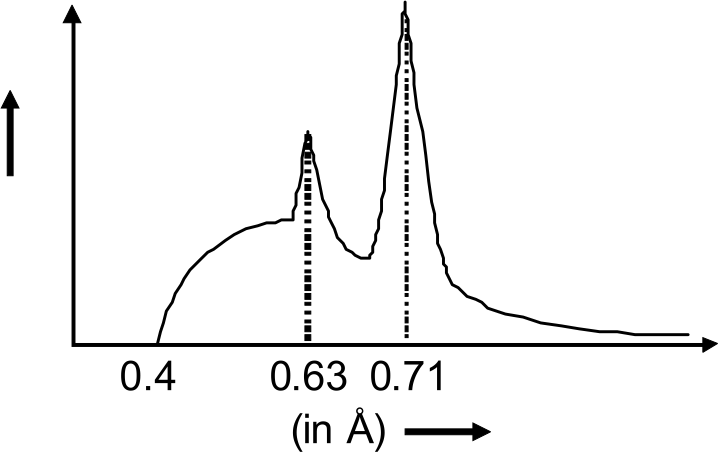Figure shows the intensity-wavelength relations of X-rays coming from two different Coolidge tube. The solid curve represents the relation for the tube A in which the potential difference between the target and the filament is VA and the atomic number of the target material is ZA. These quantities are Vβ and Zβ for the other tube. Then,

VA>VB,ZA>ZB
VA>VB,ZA<ZB
VA<VB,ZA>ZB
VA<VB,ZA<ZB
The correct Answer is:B
(λkα)>(λkα)B ⇒ ZB>ZA(λcut off)A<(λcut off)B⇒VA>VB
Topper's Solved these Questions
- BOOK - RESONANCECHAPTER - ATOMIC PHYSICSEXERCISE - Exercise-2 part-II Single and double value integer type12videos
ATOMIC PHYSICS
- BOOK - RESONANCECHAPTER - ATOMIC PHYSICSEXERCISE - Exercise-2 part-III one or more than one options correct type14videos
ATOMIC PHYSICS
- BOOK - RESONANCECHAPTER - ATOMIC PHYSICSEXERCISE - Exercise ( Part II : Only one one correct type)37videos
ATOMIC PHYSICS
- BOOK - RESONANCECHAPTER - ALTERNATING CURRENTEXERCISE - HIGH LEVEL PROBLEMS11videos
ALTERNATING CURRENT
- BOOK - RESONANCECHAPTER - CAPACITANCEEXERCISE - High Level Problems16videos
CAPACITANCE
Similar Questions
50% of the X-ray coming from a Coolidge tube is able to pase through a 0.1 mm thick aluminium foil. If the potential difference between the target and the filament is increased, the fraction of the X-ray passing through the same foil will be
View Solution50% of the X-ray coming from a Cooling tube is able to pass through a 0.1 mm thick aluminium foil. The potential difference between the target and the filament is increased. The thickness of aluminium foil, which will allow 50% of the X-ray to pass through, will be
View Solution
Knowledge Check
- Question 1 - Select One
The following figure shows the intensity-wavelength relations of x-rays coming from two different Coolidge tubes. The solid curve represents the relation for tube A in which the potential difference between the target and the filament is VA and the atomic number of the target material is ZA. These quantities are VBandZB for the other tube. Then
 AVA>VB,VA>ZBBVA>VB,ZA<ZBCVA<VB,ZA>ZBDVA<VB,ZA<ZB
AVA>VB,VA>ZBBVA>VB,ZA<ZBCVA<VB,ZA>ZBDVA<VB,ZA<ZB - Question 2 - Select One
The potential difference between the cathode and the target in a Collidge tube is 100 kV . The minimum wavelength of the X-rays emitted by the tube is
A0.66 ÅB9.38 ÅC0.246 ÅD0.123 Å - Question 3 - Select One
50% of X–rays obtained from a Coolidge tube pass through 0.3 mm. thick aluminium foil. If the potential difference between the target and the cathode is increased, then the fraction of X–rays passing through the same foil will be :–
A50%B>50%C<50%D0%
If the potential difference applied to tube is doubled and the separation between the filament and the target is also doubled, the cutoff wavelength
View SolutionThe X-ray coming from a Coolidge tube has a cutoff wavelength of 80 pm. Find the kinetic energy of the electrons hitting the target.
View SolutionThe potential difference between the cathode. And the target electrod in a coolidge tube is 24.75 kV. The minimum wavelength of the emitted X-rays is
View SolutionThe power of an X-ray tube is 16W. If the potential difference applied across the tube is 51kV , then the number of electrons striking the target per second is
View SolutionFigure shows intensity versus wavelength graph of X-rays coming from coolidge-tube with molybdenum as target element :

The two peaks shown in graph correspond to Kα and Kβ X-rays
Voltage applied across Coolidge tube is (approximatly)View Solution

